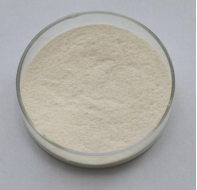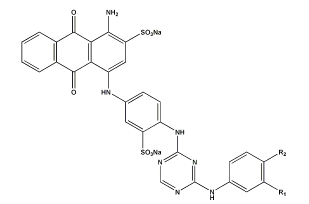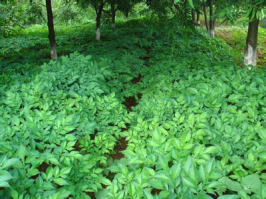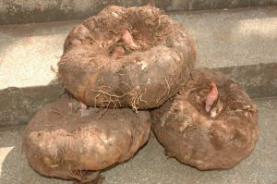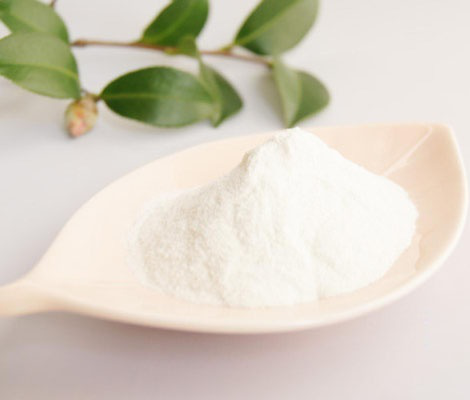Newly Arrival Konjac Gum Powder Supply to Sao Paulo
Newly Arrival Konjac Gum Powder Supply to Sao Paulo Detail:
[Latin Name] Amorphophallus konjac
[Plant Source] from China
[Specifications] Glucomannan85%-90%
[Appearance] White or cream-color powder
Plant Part Used:Root
[Particle size] 120 Mesh
[Loss on drying] ≤10.0%
[Heavy Metal] ≤10PPM
[Storage] Store in cool & dry area, keep away from the direct light and heat.
[Shelf life] 24 Months
[Package] Packed in paper-drums and two plastic-bags inside.
[Net weight] 25kgs/drum
[Introduction]
Konjac is a plant that is found in China, Japan and Indonesia. The plant is part of the genus Amorphophallus. Typically, it thrives in the warmer regions of Asia.
The extract of the Konjac root is referred to as Glucomannan. Glucomannan is a fiber-like substance traditionally used in food recipes, but now it is utilized as an alternative means of weight loss. Along with this benefit, konjac extract contains other benefits for the rest of the body as well.
The main material of the natural konjac gum is fresh konjac, which grow in virgin forest in Hubei area. We use advanced method to distill the KGM, aminophenol, Ca, Fe, Se which are good for health. Konjac is known as“ the seventh nutriment for human”.
Konjac Gum with its special water holiding capacity, stability, emulsibility, thickening property,suspension property and gel propery can especially adopted in food industry.
[Main Function]
1.It could reduce postprandial glycemia, blood cholesterol and blood pressure.
2.It could control appetite and reduce body weight.
3.It could increase insulin sensitivity.
4.It could control insulin resistant syndrome and diabetesII development.
5.It could reduce heart disease.
[Application]
1) Gelatinizer(jelly, pudding, Cheese, soft candy, jam );
2) Stabilizer(meat, beer);
3) Film Former(capsule, preservative)
4) Water-keeping agent( Baked Foodstuff );
5) Thickener (Konjac Noodles, Konjac Stick, Konjac Slice, Konjac Imitating Food stuff);
6) Adherence agent( Surimi );
7) Foam Stabilizer (ice cream, cream, beer)
Product detail pictures:

Related Product Guide:
Gaining purchaser gratification is our company's aim eternally. We're going to make great initiatives to create new and top-quality products, satisfy your exclusive prerequisites and supply you with pre-sale, on-sale and after-sale solutions for Newly Arrival Konjac Gum Powder Supply to Sao Paulo , The product will supply to all over the world, such as: Argentina, Denver, Belize, Good quality and reasonable price have brought us stable customers and high reputation. Providing 'Quality Products, Excellent Service, Competitive Prices and Prompt Delivery', we are now looking forward to even greater cooperation with overseas customers based on mutual benefits. We will work whole-heartedly to improve our products and services. We also promise to work jointly with business partners to elevate our cooperation to a higher level and share success together. Warmly welcome you to visit our factory sincerely.
Every single man gotta see this video! ♥ Here are all the links:
SIGN UP FOR – PENIS MAGIC COURSE
https://www.mytinysecrets.com/magicpeniscourse
♥ PLEASE SUBSCRIBE TO MY CHANNEL: https://tinyurl.com/subscribemytinysecrets
OTHER PLACES TO FIND ME:
☯ MY INSTAGRAM: https://instagram.com/adina_rivers/
☯ MY FACEBOOK PAGE: https://www.facebook.com/officialadinarivers
☯ MY TWITTER: https://twitter.com/mytinysecrets
☯ MY BLOG & PERSONAL NEWSLETTER: https://mytinysecrets.com/
My LIVE BROADCASTS about love, sex and life on PERISCOPE: @adinamytinysecrets
◦◦◦◦◦◦◦◦◦◦◦◦◦◦◦◦◦◦◦◦◦◦◦◦◦◦◦◦◦◦
I make unique videos about love, sex & life. Every Sunday. Almost.
◦◦◦◦◦◦◦◦◦◦◦◦◦◦◦◦◦◦◦◦◦◦◦◦◦◦◦◦◦◦
I am sooo grateful to have you with me on this crazy journey called life. My deepest gratitude to my wonderful little family, my amazing crew and my guardians. I am sending you all my love.
Much love, Adina ♥
My Tiny Secrets
◦◦◦◦◦◦◦◦◦◦◦◦◦◦◦◦◦◦◦◦◦◦◦◦◦◦◦◦◦◦
For a happy and satisfying relationship with your wife, Robust Extreme is here to help! Robust Extreme dietary supplement for men contains 100% all natural ingredients – Spiral Algae, Corn Extract, Medlar Extract, Ginseng Extract, Epimedium Extract, Cistanche Salsa Extract and Hawthorn Berry Extract – that help men sustain a powerful and long lasting erection, boost sexual appetite, and give the ability to repeat intimate activities.
Robust Extreme is SRP P125.00 per capsule, available at all Mercury Drug, Watsons, South Star Drug, The Generics Pharmacy, Generika, Rose Pharmacy, St. Joseph Drug, 7-11, SM Supermarkets and other leading drugstores and supermarkets nationwide.
The goods we received and the sample sales staff display to us have the same quality, it is really a creditable manufacturer.
